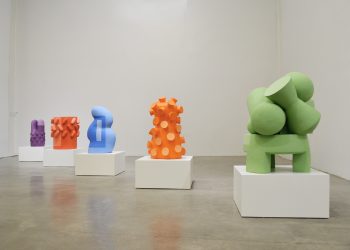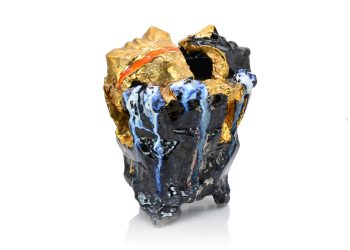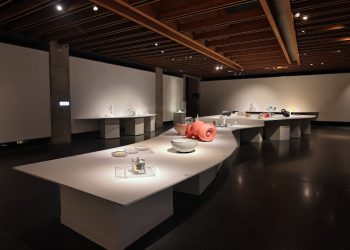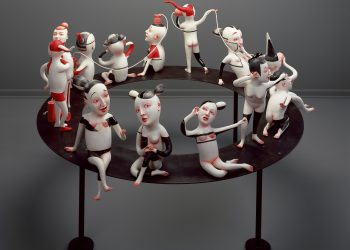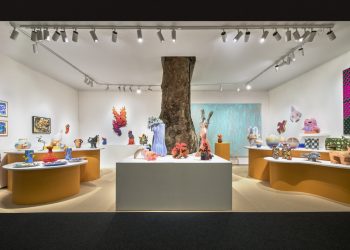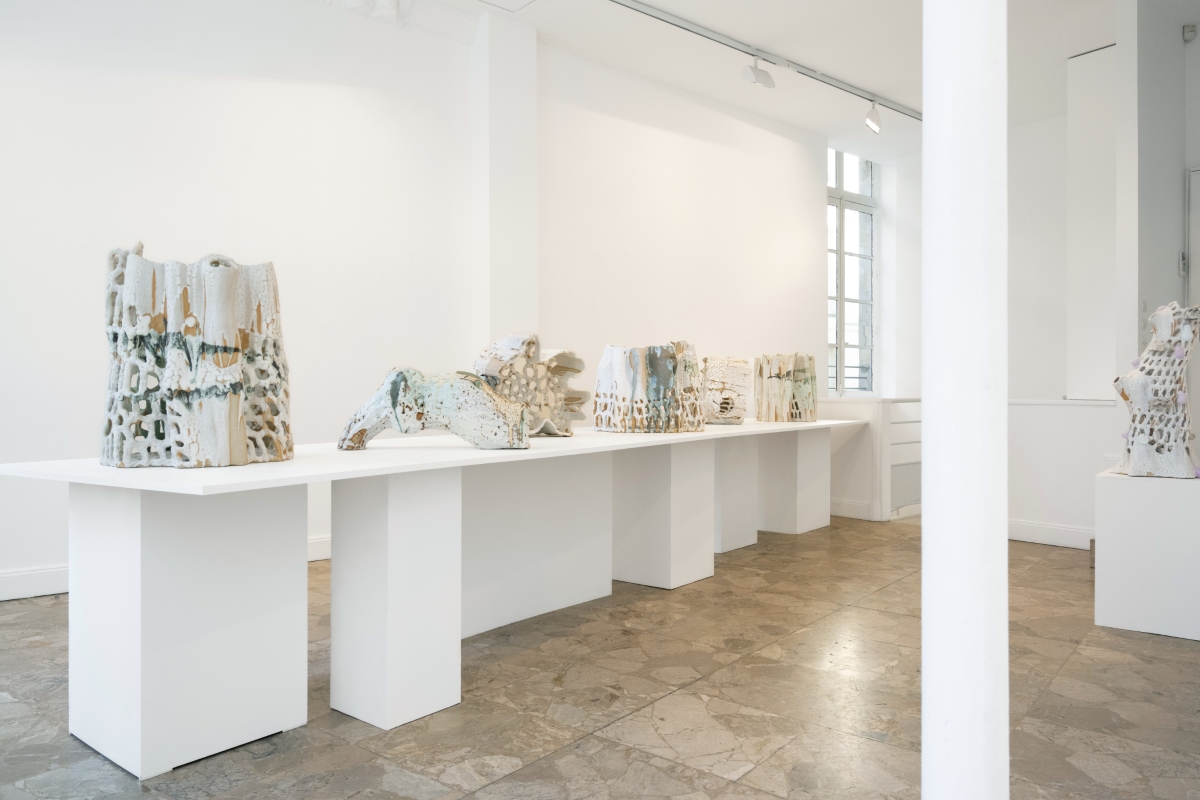
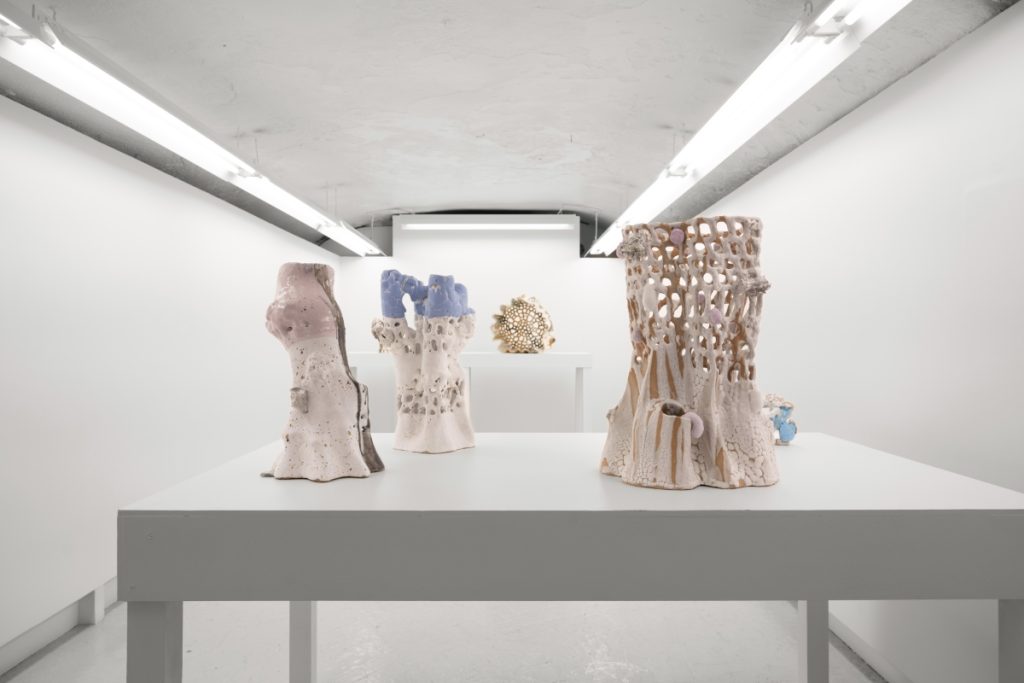
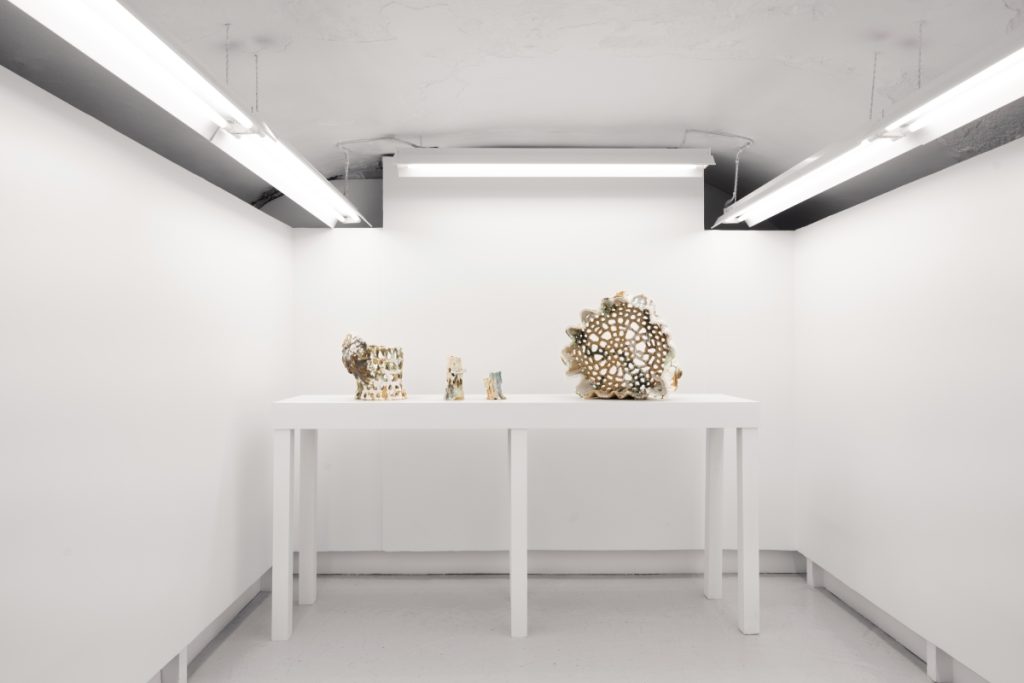
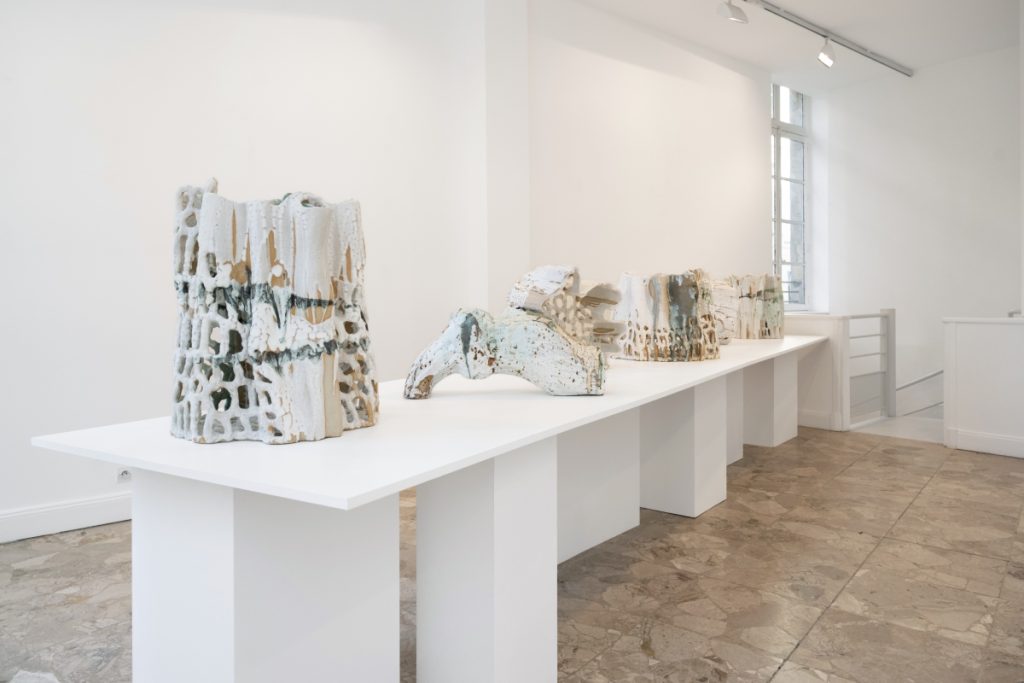
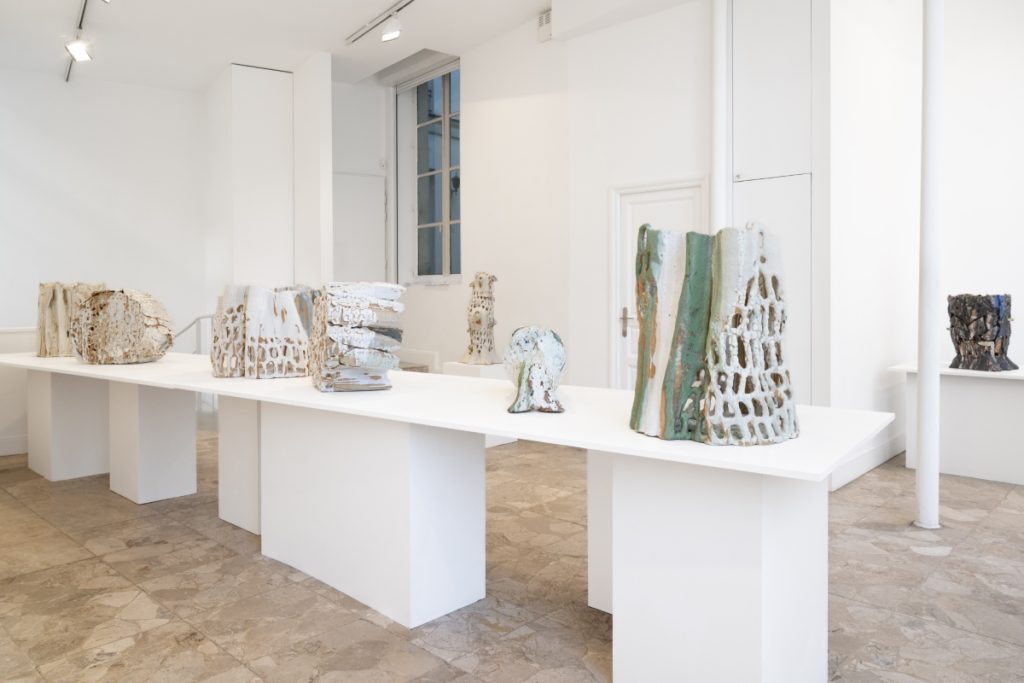
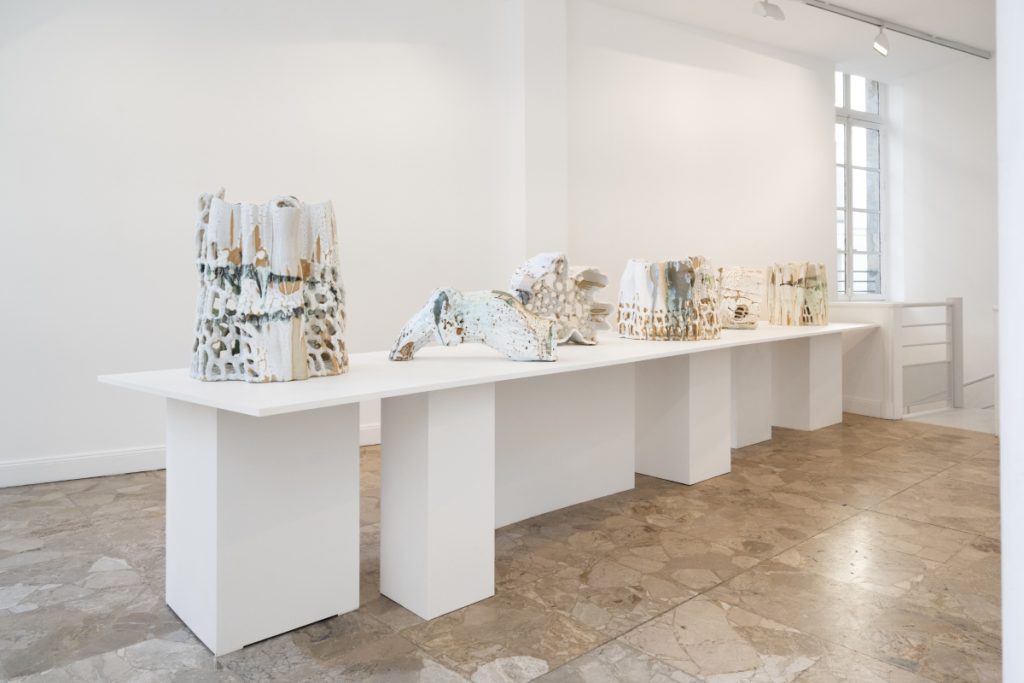
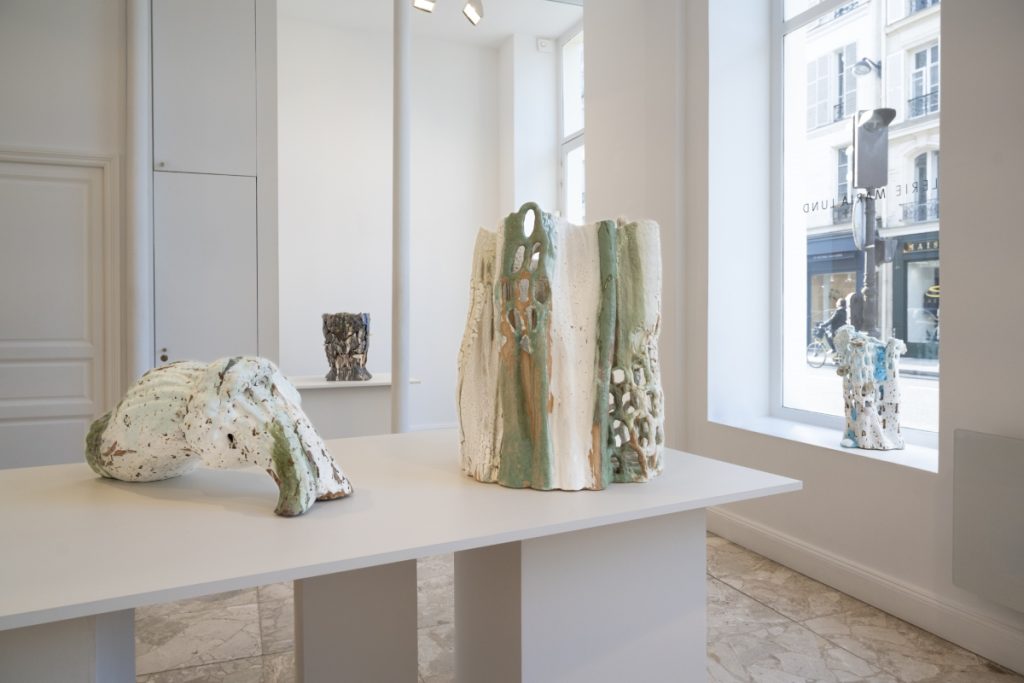
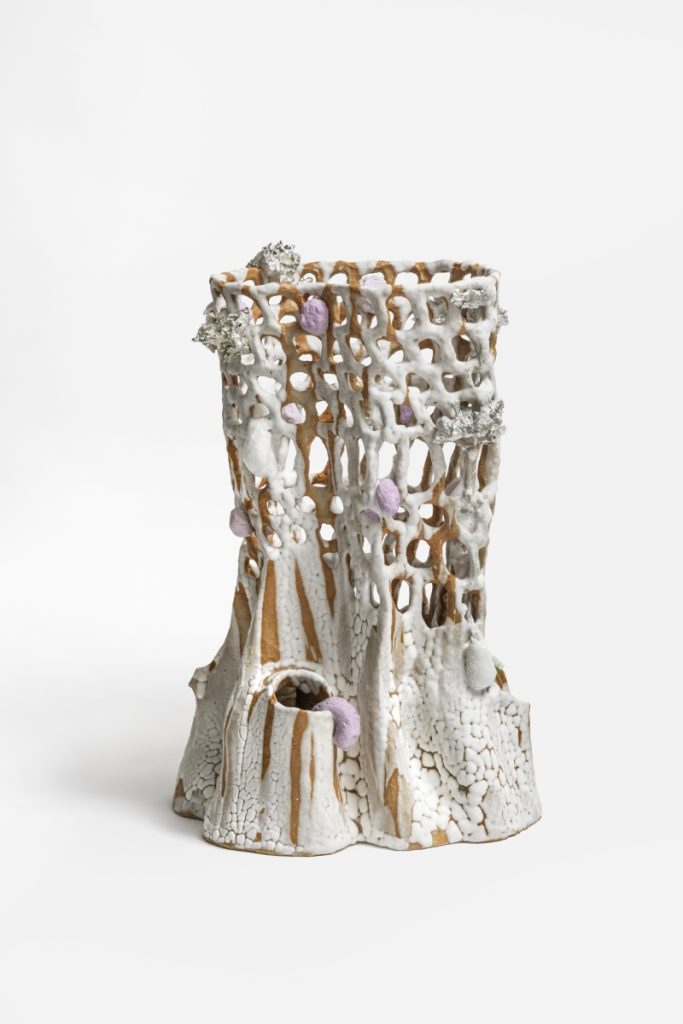
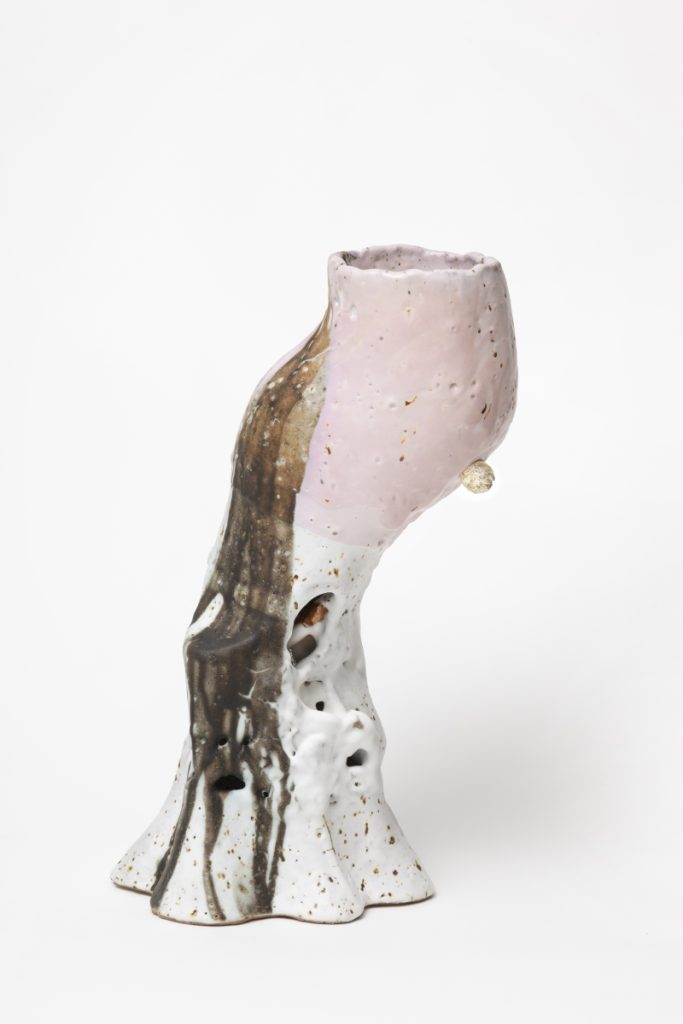
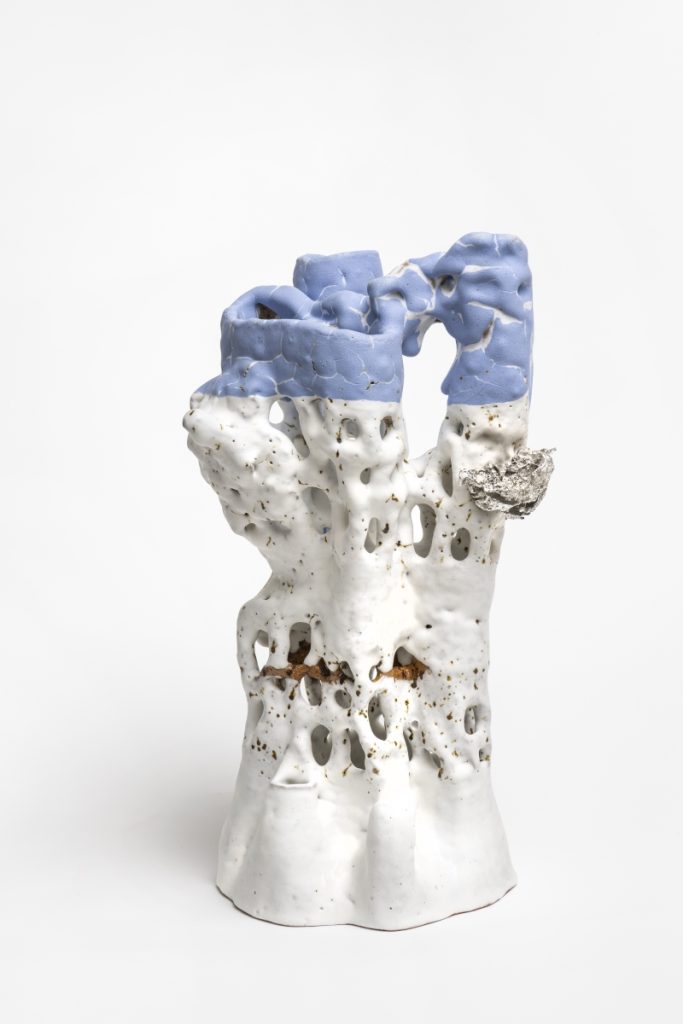
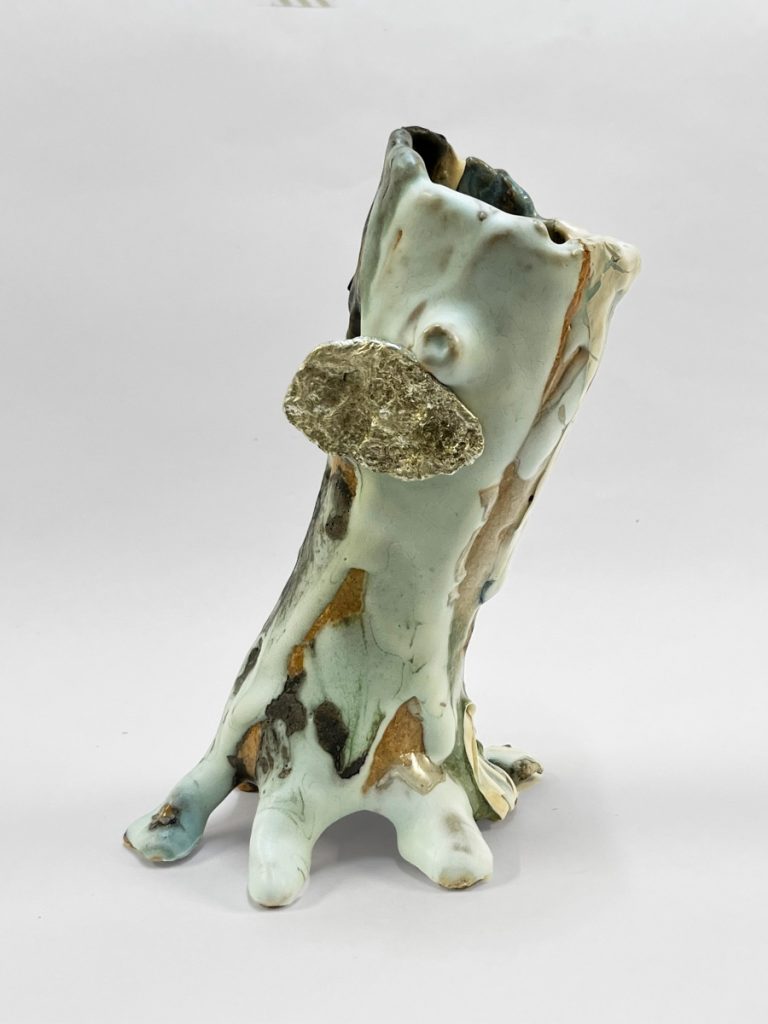
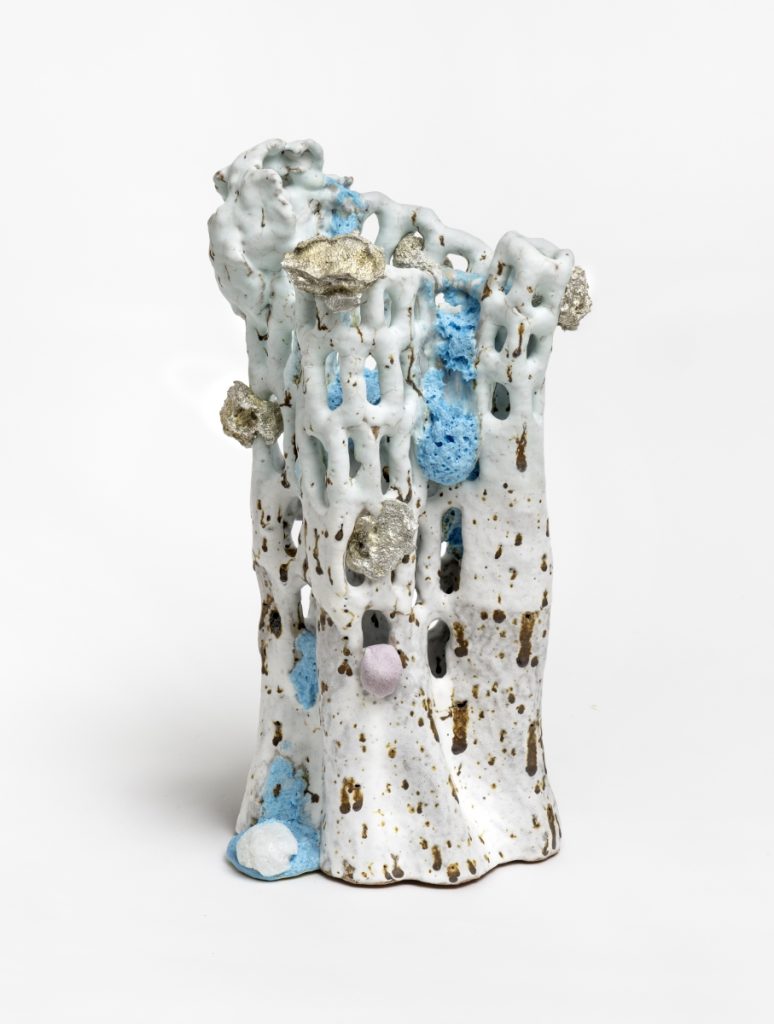
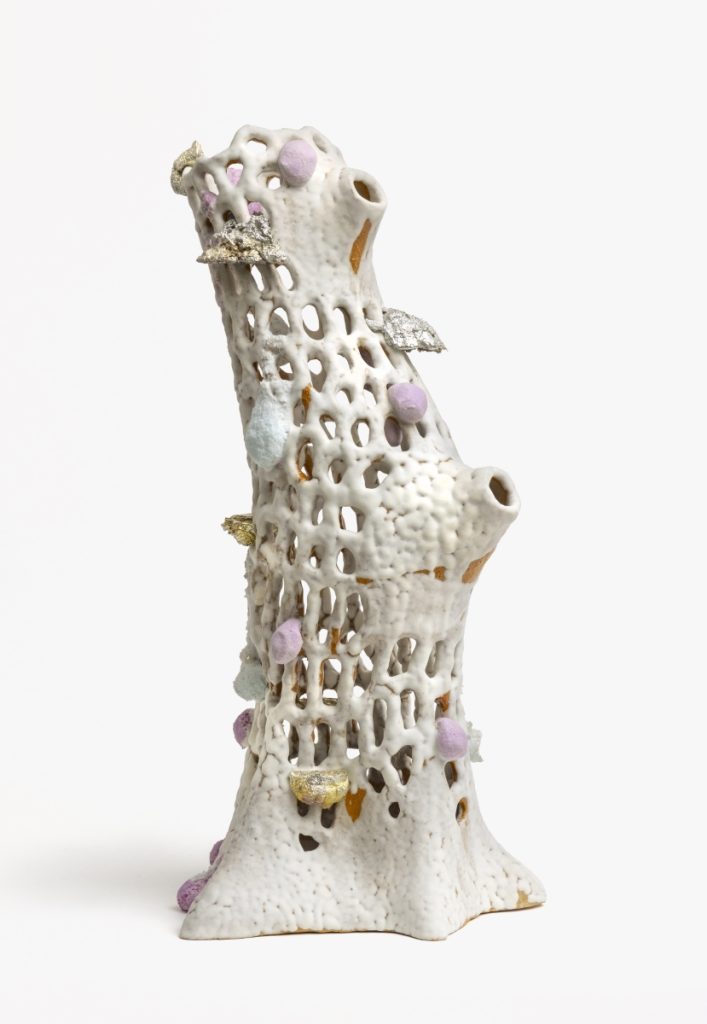
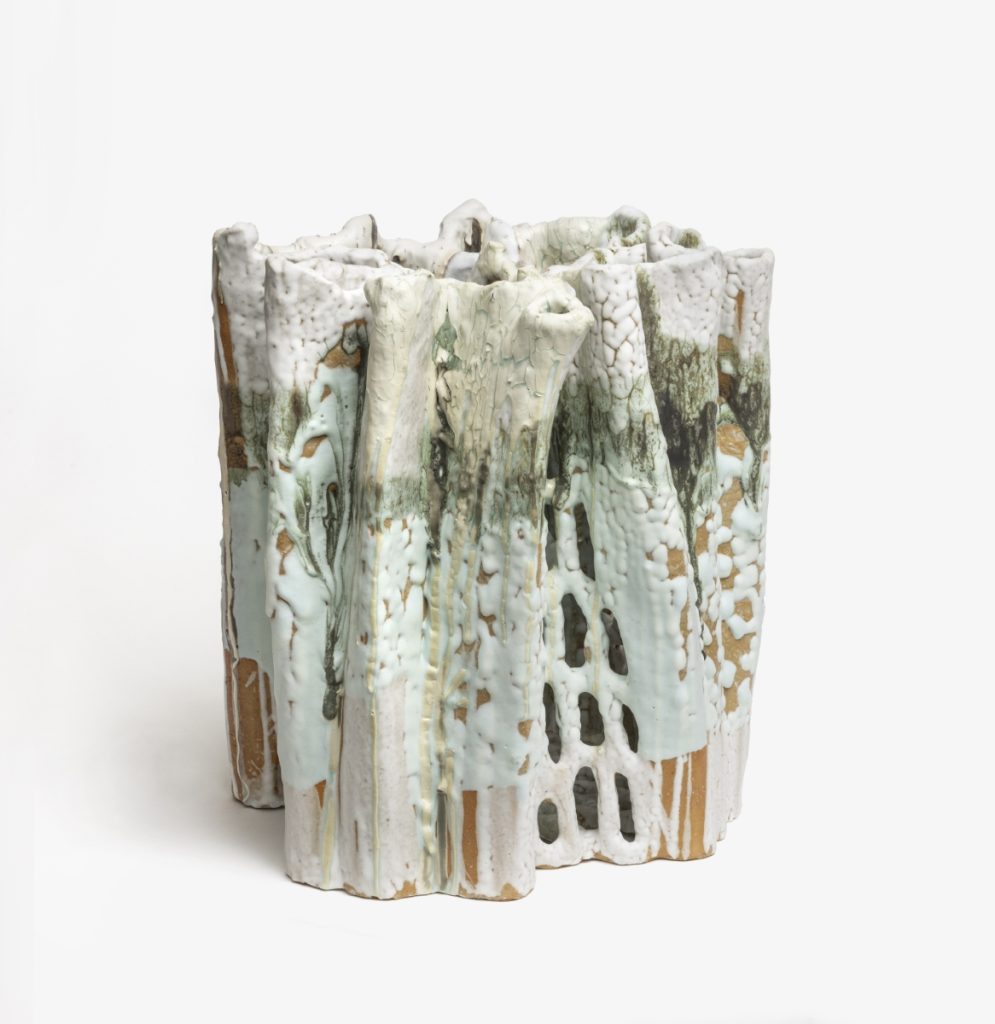
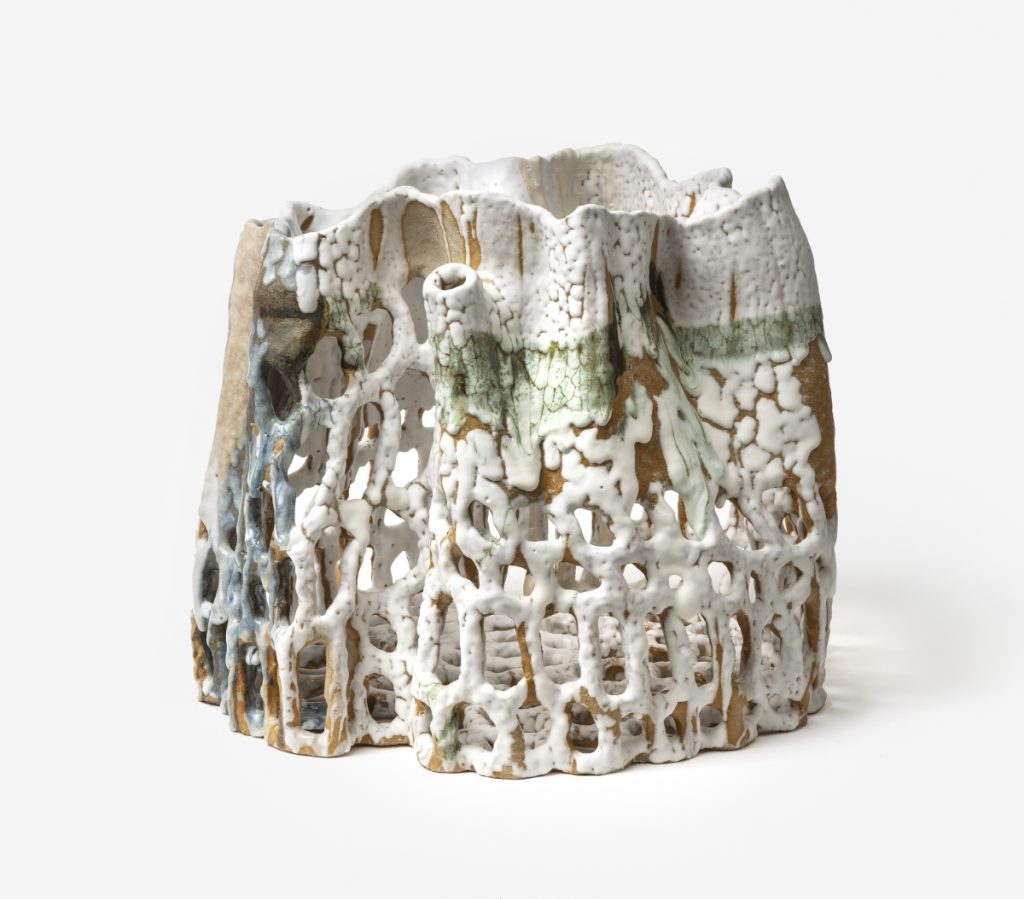
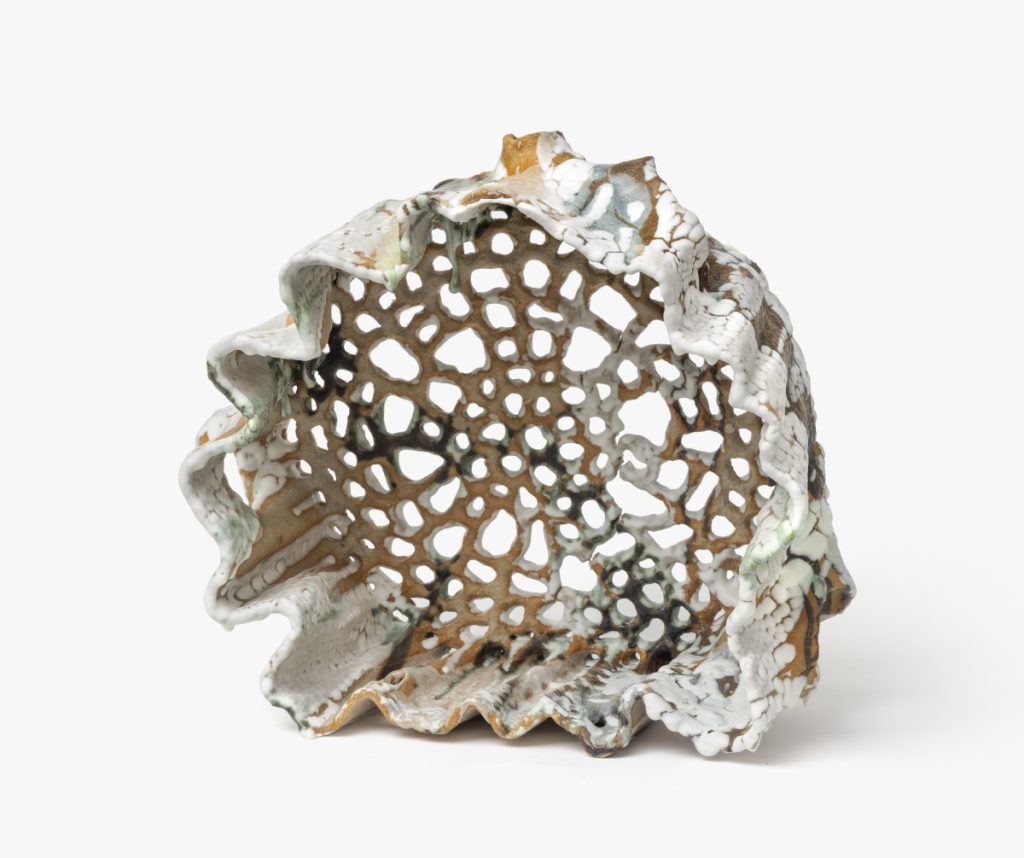
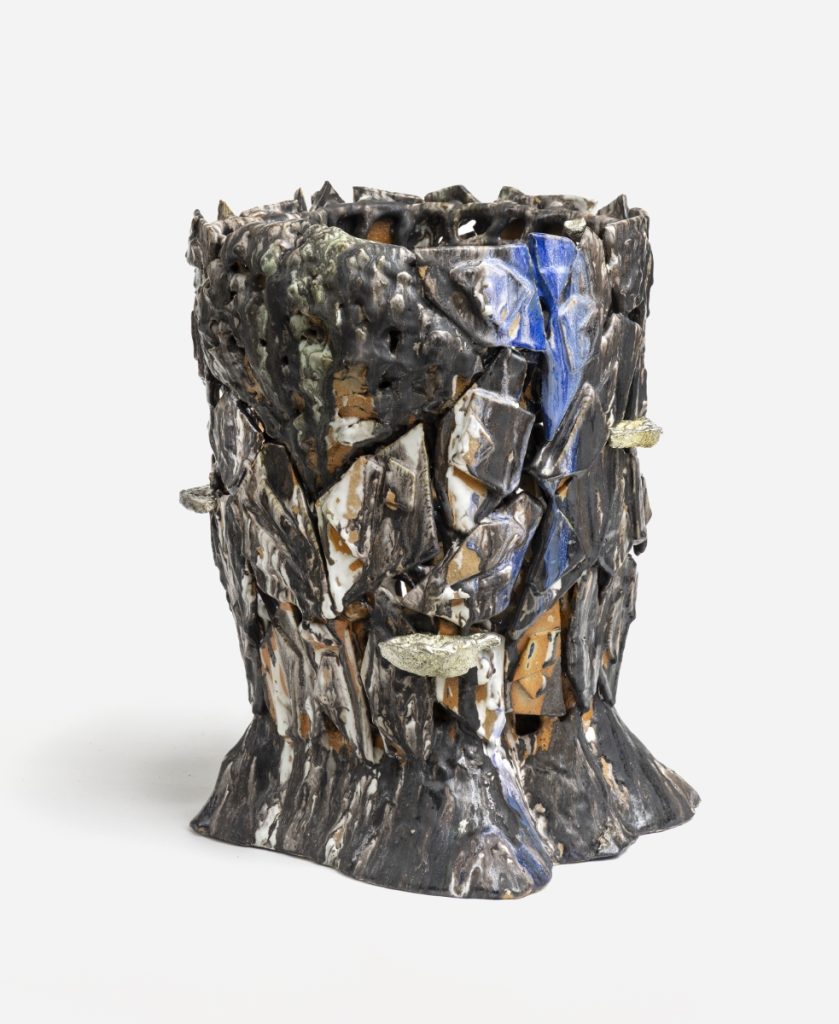
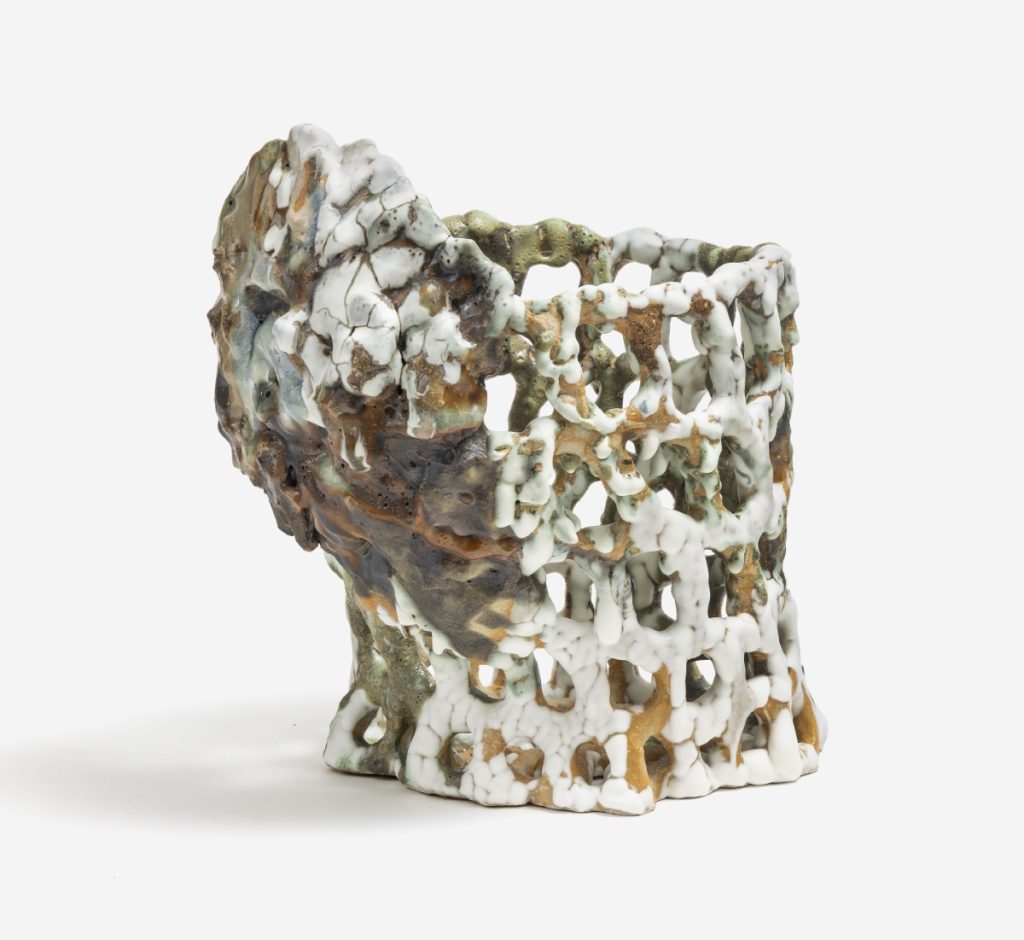
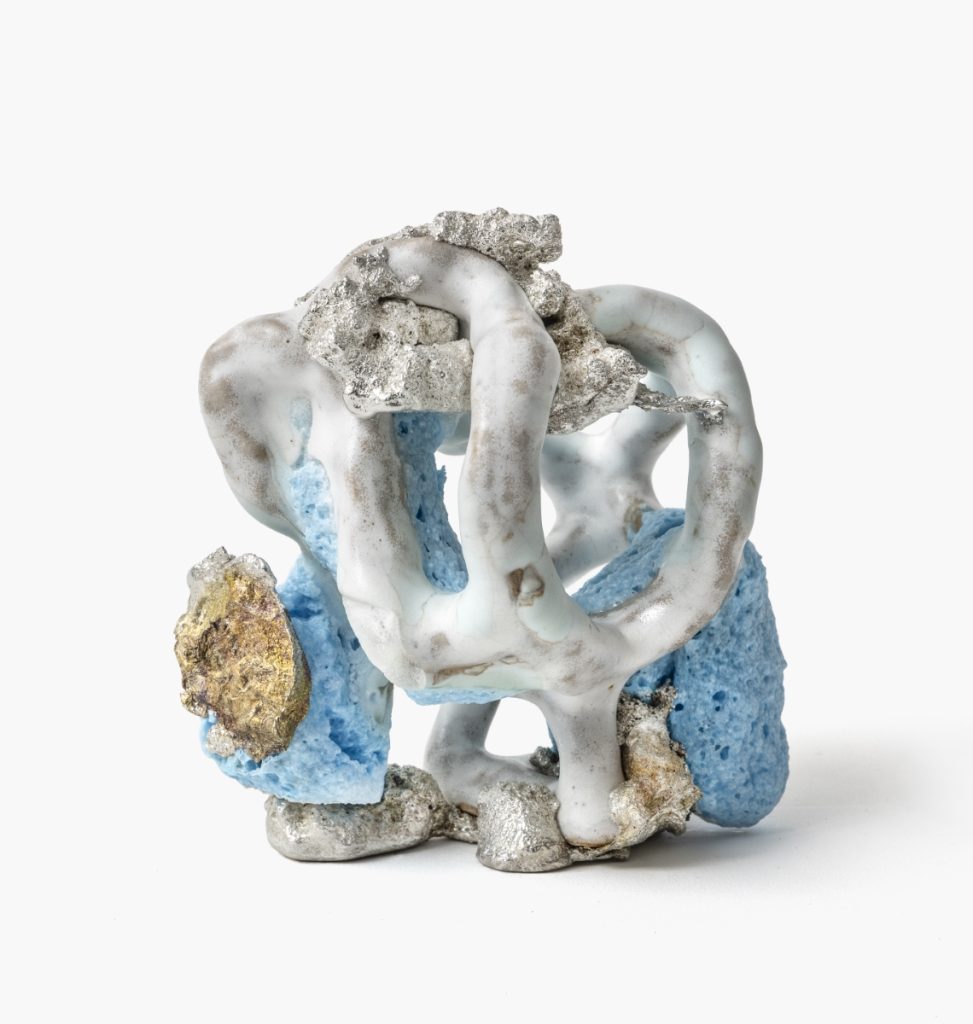
Bente Skjøttgaard: Timberline is on view at Galerie Maria Lund, Paris
February 2 – March 16, 2024
An oak can grow to be one thousand years old. A tree thus becomes a witness of time and evolutions: unfavorable weather, natural disasters, and human intervention make themselves part of it and alter its aspect.
With Timberline, Bente Skjøttgaard allows the millennial tree to speak: she imagined a fossilized, eternal, mysterious, and aethereal forest where enormous trees materialize history —and stories.
Her new sculptures, be they straight or curved, shoot up to the sky or run alongside the ground. They convey these quiet forces with great dynamism. Her surfaces, dense or openwork, evoke the thin structures of the microscopic fabric of a tree. Some of them, with their irregular mosaics, seem to outline the bark structure. Gradations of white prevail, in contrast with delicate shades of green, deep shades of blue, or even a delicious pink. A silvery sparkle is brought here and there by some knot, some appendix, some parasite growth in tin casting.
Timberline represents a border beyond which some forms of life cannot survive, thus extending a symbolic invitation to treasure life and value its importance. Here Bente Skjøttgaard pays tribute to trees, to their slow growth, to their resilient nature and their ability to absorb waste, to the precious shelter they become for many animals and tiny life forms.
By naming her works Family Tree, she suggests a parallel with the human family, with its succession of generations and its young shoots growing both under the protection of the older trees and in their shadow.
In the winter of 2005 and 2006, European forests were devastated by a storm. Seeing the ground strewn with uprooted, mutilated trees, Bente Skjøttgaard had then modeled naked roots, trunks, and heaps of branches through a range of green, yellow, and brown glazes reminiscent of utilitarian pottery. Two years later, the artist would revisit the origins of ceramic materials with Elements in White. There, rocks, organic materials, and human littering came together to make colossal sculptures unified through white glazes of extraordinary textures —coarse coral-like surfaces, cracks, sugar coating. Civilization, culture, and nature had met in this tour de force of materials.
Although Timberline relates to these past two series, it is also the result of a journey through the history of Franco-Danish ceramics of the late 19th century and early 20th century. This journey started when the Vejen Kunstmuseum in Denmark devoted a research project to Niels Hansen Jacobsen (1861-1941), following the 2020 monographic exhibition dedicated to him by the Musée Bourdelle. The Danish artist lived in Paris for ten years, having the sculptor Jean Carriès (1855-1894) as a neighbor. Jean Carriès was known for his pioneer work in ceramics, born from his fascination for pieces from the Chinese Song period and from the exclusive use of local materials characteristic of that technique. The Vejen Kunstmuseum’s research project aimed at digging deeper into the secrets of Niels Hansen Jacobsen’s overflowing creativity with the help of ten artists-ceramicists, including Bente Skjøttgaard. The Danish artist might have gotten hold of Jean Carriès’s glaze recipes, published posthumously by his assistant L. Auclair in the article Céramique de grand feu in Art et Décoration in October 1910. Working from this hypothesis, Bente Skjøttgaard tried to interpret Carriès’ recipes using his flagship principle: working on local and contemporaneous materials. LECA balls, bricks, crushed volcanic stones, and scoria from Niels Hansen Jacobsen’s kiln are all put together to form new glazes. Particularly inspired by one specific work of his —VKV3050, a small jug with a pewter handle shaped like a branch from his Parisian period—, Bente Skjøttgaard learned the casting techniques of lost wax and sand cast. This is how tin elements —partially visible, partially hidden— got themselves into Bente Skjøttgaard’s lexicon, linking her work to the fundamental research and the mysterious experiments of alchemists of yore, themselves closely related to the history of ceramics.
Feeding the human imagination from times immemorial, trees and what they might be hiding inspired countless stories and tales. Similarly, the sculptures in Timberline tell tales of temporality, of resilience, of family, and of environmental issues. These works also tell us a story of inspiration between generations of artists and of the links between the French and Danish art avant-gardes of the late 19th century, which are once again renewed by the experiments and the embodied poetry so characteristic of Bente Skjøttgaard.
Timberline is Bente Skjøttgaard’s ninth exhibition at the Galerie Maria Lund, marking two decades of collaboration between the artist and the gallery.
Contact
T. +33 (0)1 42 76 00 33
Galerie Maria Lund
48 Rue de Turenne
75003 Paris
France
Photos by Axel Fried. Courtesy of Bente Skjøttgaard & Galerie Maria Lund
Captions
- Family Tree #2326, stoneware, glaze, tin, 59x35x40 cm
- Family Tree #2324, stoneware, glaze, tin, 49x31x27 cm
- Family Tree #2319, stoneware, glaze, tin, 50x28x29 cm
- Family Tree #2352, stoneware, glaze, tin, 20x13x14 cm
- Family Tree #2339, stoneware, glaze, tin, 56x30x31 cm
- Family Tree #2338, stoneware, glaze, tin, 79x41x39 cm
- Timberline #2334, stoneware, glaze, 56x50x50 cm
- Timberline #2332, stoneware, glaze, 51x62x64 cm
- Timberline #2327, stoneware, glaze, 50x58x28 cm
- Family Tree #2323, stoneware, glaze, tin, 53x51x45 cm
- Timberline #2330, stoneware, glaze, 31x30x24 cm
- Family Tree #2346, stoneware, glaze, tin, 15x14x11 cm




